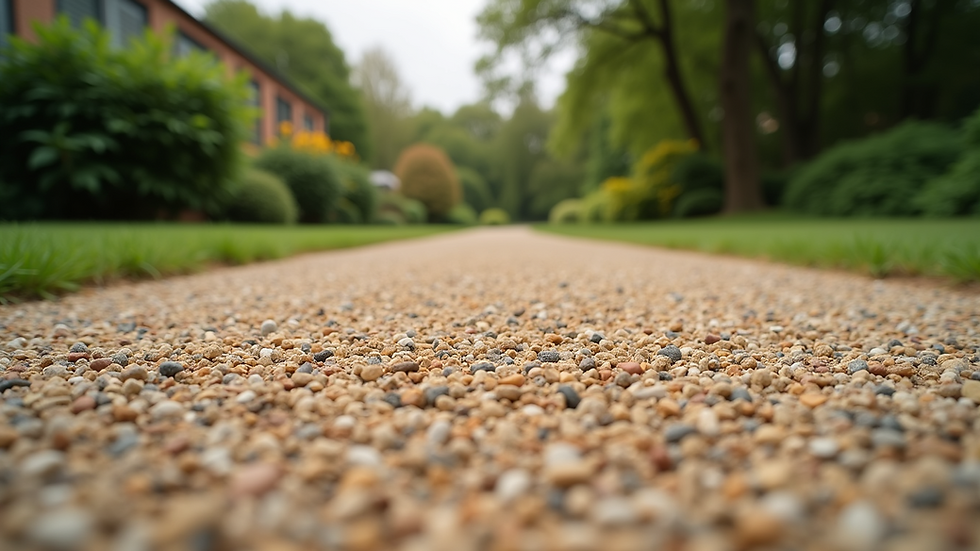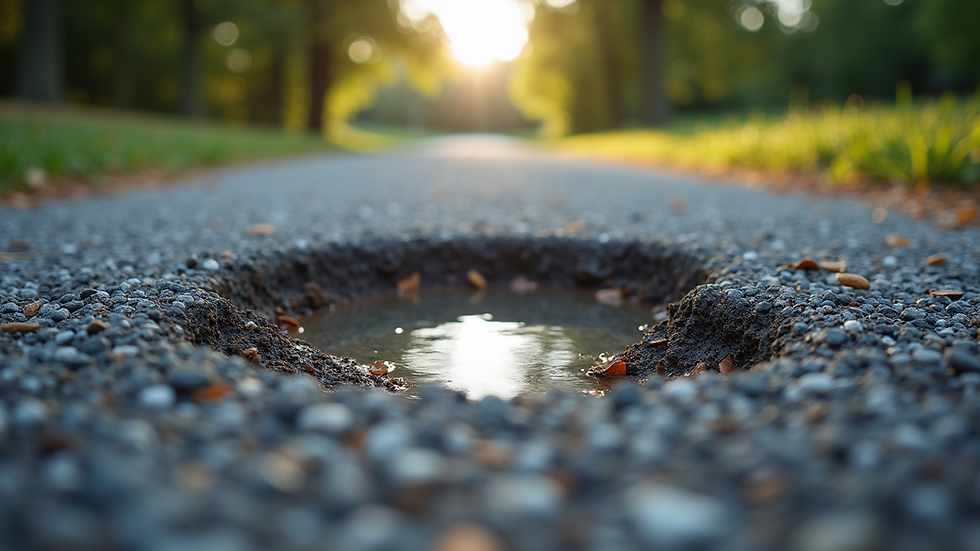How to Maintain Your Gravel Driveway Effectively
- mpd18049
- Sep 24
- 4 min read
A gravel driveway can add charm and character to your property. However, it requires regular maintenance to keep it looking its best. If neglected, a gravel driveway can become uneven, overgrown, and even muddy. Fortunately, maintaining your gravel driveway is not as daunting as it may seem. With a few simple steps, you can ensure that your driveway remains functional and attractive for years to come.
In this post, we will explore effective strategies for maintaining your gravel driveway. From regular inspections to proper grading, we will cover everything you need to know to keep your driveway in top shape.
Regular Inspections
The first step in maintaining your gravel driveway is to conduct regular inspections. This means checking for any signs of wear and tear, such as potholes, ruts, or erosion.
What to Look For
Potholes: These can form due to water pooling or heavy traffic. They can be a hazard and should be repaired promptly.
Ruts: Ruts can develop from the weight of vehicles, especially if the driveway is not properly compacted.
Erosion: Look for areas where gravel has washed away, especially after heavy rain.
By inspecting your driveway regularly, you can catch small issues before they become larger problems.
Grading Your Driveway
Grading is the process of leveling the surface of your gravel driveway. This is essential for maintaining proper drainage and preventing water from pooling.
When to Grade
After Heavy Rain: If you notice that water is pooling in certain areas, it may be time to grade your driveway.
Once a Year: Even if you do not see any immediate issues, grading once a year can help maintain the overall shape and structure of your driveway.
How to Grade
You can hire a professional to grade your driveway, or you can do it yourself if you have the right equipment. A box blade or a grader attachment for a tractor can be very effective.
Remove Debris: Clear any leaves, branches, or other debris from the surface.
Level the Surface: Use the grading tool to level out any high spots and fill in low areas.
Compact the Gravel: After grading, compact the gravel to ensure a solid surface.
Filling in Potholes
Potholes can be a major nuisance, but they are relatively easy to fix.
Steps to Repair Potholes
Clean the Area: Remove any loose gravel and debris from the pothole.
Fill the Pothole: Use fresh gravel to fill the hole, making sure to overfill slightly.
Compact the Gravel: Use a tamper or a heavy object to compact the gravel into the hole.
Blend the Edges: Use a rake to blend the edges of the filled pothole with the surrounding gravel.
By addressing potholes promptly, you can prevent them from becoming larger and more difficult to repair.
Managing Weeds and Vegetation
Weeds can quickly take over a gravel driveway if left unchecked. Regular maintenance is key to keeping them at bay.
How to Control Weeds
Manual Removal: Pulling weeds by hand is effective, especially for small patches.
Mulch: Adding a layer of mulch along the edges of your driveway can help suppress weed growth.
Herbicides: If weeds are a persistent problem, consider using a weed killer. Be sure to follow the instructions carefully to avoid damaging your gravel.
Proper Drainage
Good drainage is crucial for maintaining a gravel driveway. Without it, water can pool and cause erosion.
Tips for Improving Drainage
Ditches and Swales: Create ditches or swales on the sides of your driveway to direct water away.
Crown the Driveway: Ensure that the center of your driveway is higher than the edges. This will help water flow off the sides.
Install Drainage Pipes: If you have persistent drainage issues, consider installing drainage pipes to carry water away from your driveway.
Adding Fresh Gravel
Over time, gravel can become compacted and lose its effectiveness. Adding fresh gravel can help restore the look and function of your driveway.
When to Add Gravel
Every Few Years: Depending on traffic and weather conditions, you may need to add gravel every few years.
After Repairs: If you have filled potholes or graded your driveway, adding fresh gravel can help blend everything together.
How to Add Gravel
Choose the Right Gravel: Select gravel that matches the existing material.
Spread Evenly: Use a rake to spread the gravel evenly across the surface.
Compact the Gravel: Use a roller or tamper to compact the new gravel into place.
Seasonal Maintenance
Different seasons can bring unique challenges for your gravel driveway.
Spring Maintenance
Inspect for Winter Damage: Check for any damage caused by snow or ice.
Clear Debris: Remove any leaves or branches that have accumulated over the winter.
Summer Maintenance
Weed Control: Keep an eye on weed growth and address it promptly.
Check Drainage: Ensure that drainage systems are functioning properly.
Fall Maintenance
Prepare for Winter: Grade your driveway to ensure proper drainage before winter weather hits.
Add Fresh Gravel: Consider adding fresh gravel before the snow falls.
Winter Maintenance
Clear Snow: Use a snow shovel or plow to keep your driveway clear.
Avoid Salt: If possible, avoid using salt on your gravel driveway, as it can damage the gravel.
Conclusion: A Driveway to Be Proud Of
Maintaining your gravel driveway may seem like a chore, but with regular attention, it can be a simple task. By following these tips, you can keep your driveway looking great and functioning well.
Remember, a well-maintained gravel driveway not only enhances the beauty of your property but also provides a safe and reliable surface for vehicles. So roll up your sleeves and get started on your driveway maintenance today!



Comments